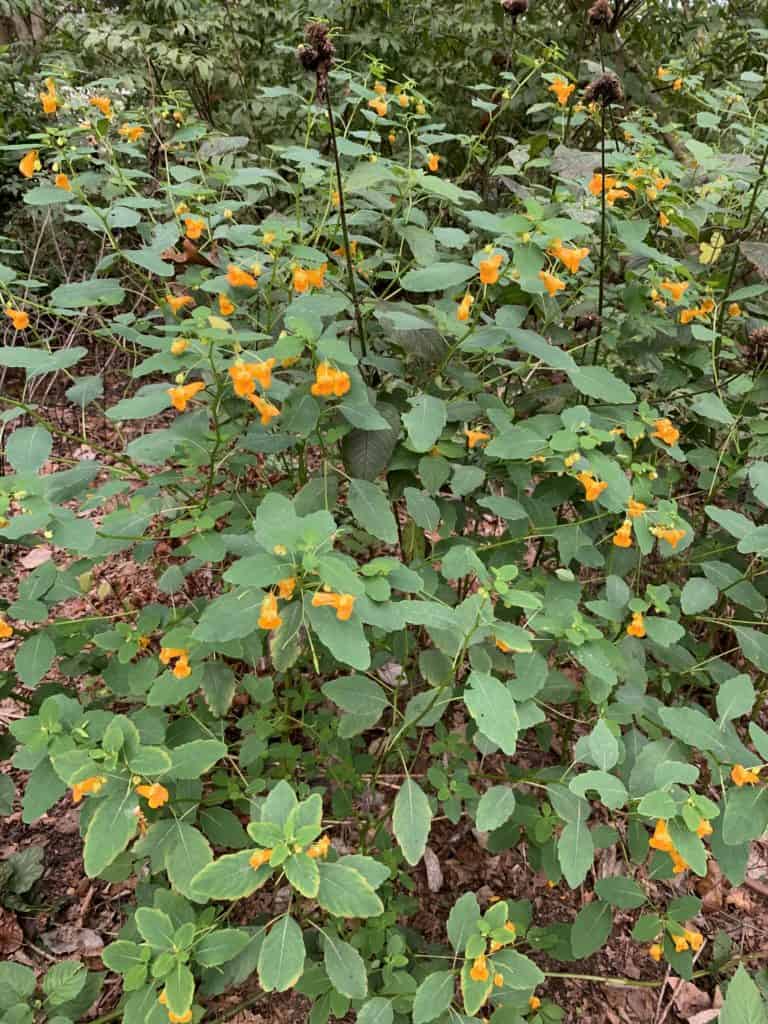Gardening for Health

A Garden Gem in More Than One Way
By Maria Price
A beautiful late summer bloomer, jewelweed is a native plant that is a bit on the wild side. Impatiens capensis, also known as spotted touch-me-not, disperses ripe seeds explosively when touched. It is related to the tropical bedding impatiens, and there are great drifts of jewelweed found in the northern states and Canadian provinces, wherever moisture and shade are abundant. Shady streambanks and boggy areas are what it loves.
Jewelweed is an annual, but because of its great seed dispersal it reliably comes back. It grows 3 to 4 feet tall with orange, elf-cap shaped flowers, often with some reddish-brown markings. Jewelweed is nectar-rich, attracting both butterflies and hummingbirds. The nectar can contain upward of 43 percent sugar, much higher than that produced by other flowers. The ruby-throated hummingbird is considered the plant’s primary pollinator but it is also visited by a number of flies, bees and wasps. The spicebush swallowtail can also be seen on its blossoms. The peak of the southbound migration of the ruby-throated hummingbird coincides with the height of the jewelweed blooming period. This provides the energy needed for the hummingbirds to make this difficult trip.
Not only is this plant great for pollinators, it’s useful medicinally for humans. Crushed jewelweed stems can be used to treat poison ivy and nettle stings. The stem can be slit, crushed and rubbed on the affected area. The best part is at the base of the plant where reddish protuberances that resemble little prop-roots extend out from the lower stem.
Dr. Robert Rosen, a chemist at Rutgers University in New Jersey, identified the active ingredient in jewelweed as lawsone. It binds to the same sites on the skin as urushiol, the active component of poison ivy. If applied quickly after contact with poison ivy, lawsone beats the urushiol to those sites, locking it out.
To keep jewelweed available during the year, I make a simple blend of one part chopped stem to 2 parts rubbing alcohol. Make sure to label it for an external use only. That way, if you encounter poison ivy in the winter, you can externally rub your skin with this blend until the itching stops.
